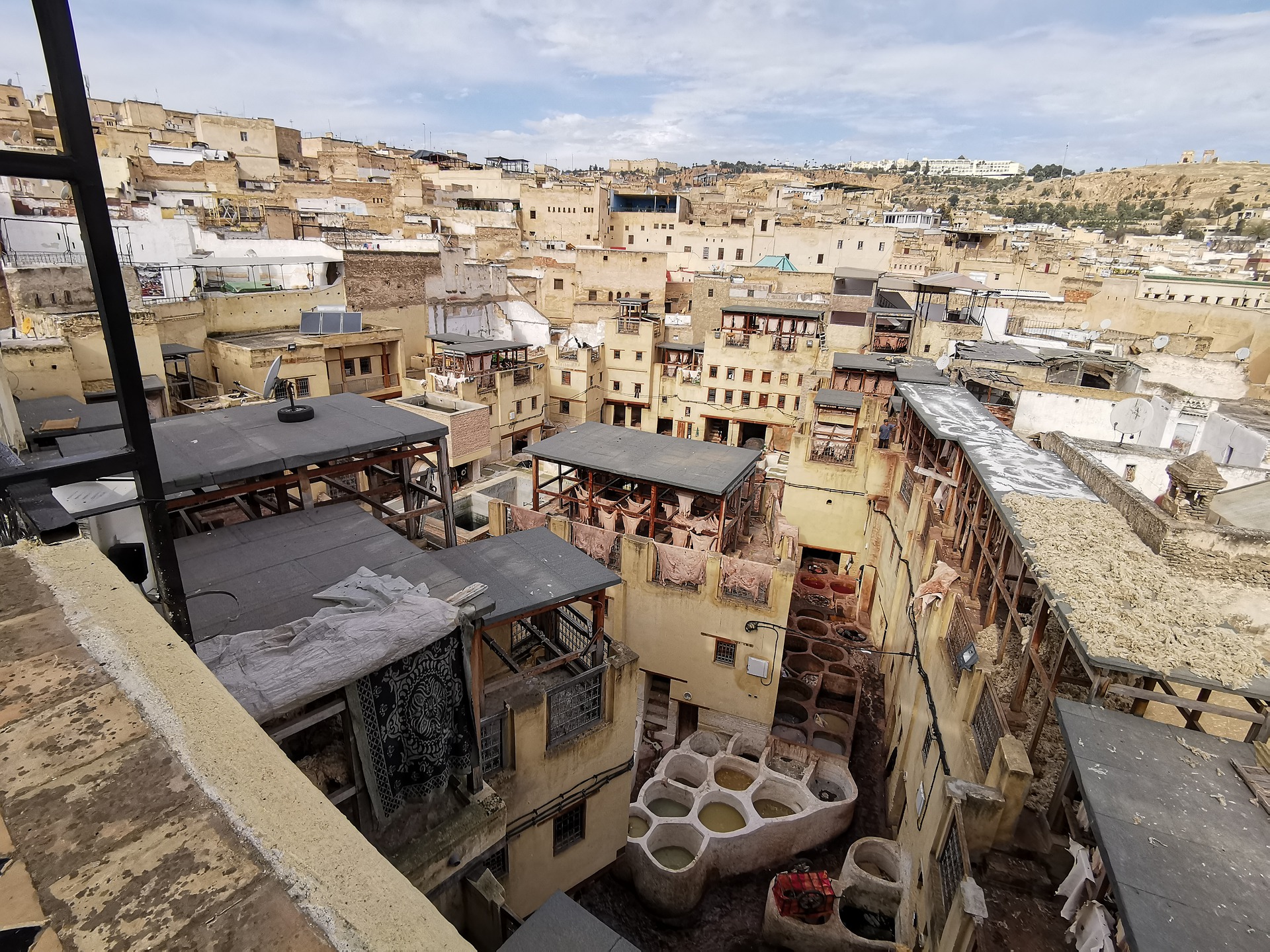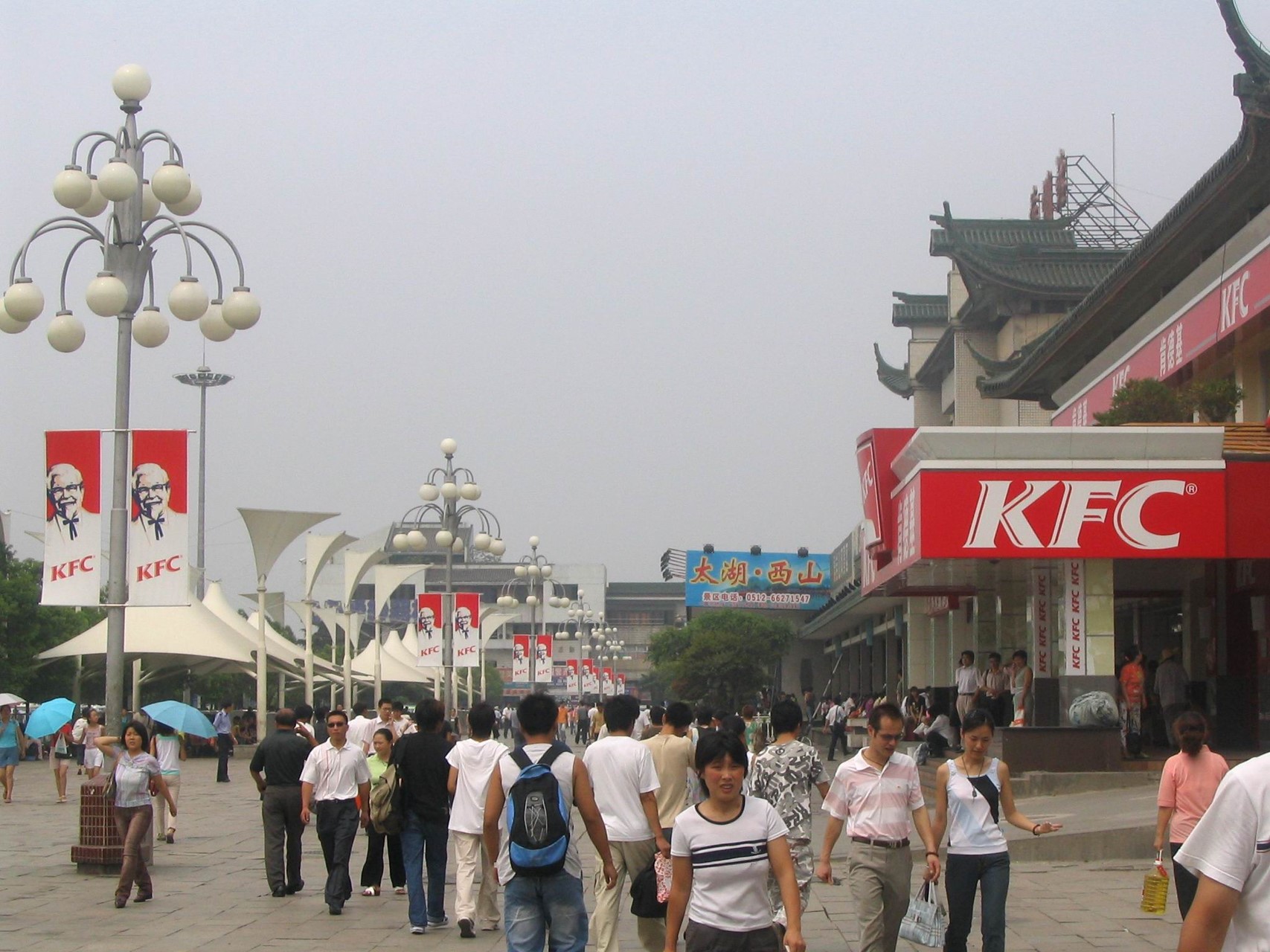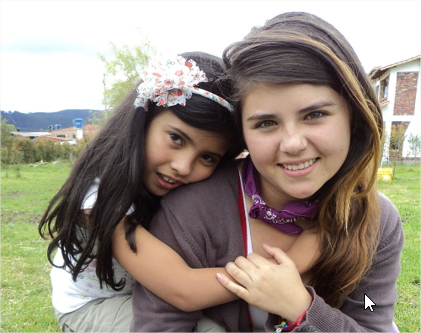6.1: Introduction to Culture Shock
- Page ID
- 47457
Introduction to Culture Shock
In your reading of this textbook thus far, we have discussed many theories and principles to help you understand many dynamics of intercultural communication. But understanding intercultural communication is not the same thing as experiencing it. To experience intercultural communication, one needs to get off the couch and set foot into a new and unfamiliar culture. When a person moves from to a cultural environment that is different than their own, they often experience personal disorientation called culture shock. Culture shock refers to the anxiety and discomfort we feel when moving from a familiar environment to an unfamiliar one. In our own culture, through time, we have learned the million and one ways how to communicate appropriately with friends, family members, colleagues, and others. We know how to great people, when and how to give tips, whether to stand or sit, how much eye contact to make, when to accept and refuse invitations, how to understand directions, whether others are being sarcastic or not, how holidays are and are not celebrated, how to shop for and prepare food, and generally how to communicate verbally and nonverbally in any given social situation. When we enter a new culture, many of those familiar signs and signals are gone, leading us to feel helplessly lost in many circumstances.
The ABC's of Culture Shock
Culture shock is first and foremost an emotional response to a change in our culture environment. But it also impacts how we act and how we think. The ABC's of culture shock refer to the affective, behavioral, and cognitive changes brought on by culture shock. The affective dimension of culture shock refers to the anxiety, bewilderment, and disorientation of experiencing a new culture. Kalervo Oberg (1960) believed culture shock produced an identity loss and confusion from the psychological toll exerted to adjust to a new culture. The behavioral dimension refers to confusion over behaviors of people in the host culture. We don't understand why people are behaving they way they are in certain situations and we are not sure how to act appropriately. The cognitive dimension refers to our inability to interpret our new environment, or understand these "bizarre" social experiences.
Underlying Factors
Over the past several decades, there have been numerous peer reviewed, scholarly studies documenting the effects of culture shock. The research suggests that nearly everybody who enters a new culture will experience some form of culture shock, but not everybody experiences culture shock the same way. How long culture shock lasts and the degree to which it is felt will vary according to several underlying factors. One of the most important factors is motivational orientation. Some people travel willingly and are excited to enter a new culture. Students who decide to study abroad, travelers who want to explore the world and families who go on vacations provide few examples. These groups generally have a high motivational orientation and generally have an easier time adapting to culture shock. By contrast, others enter a new culture reluctantly or unwillingly. According to the United Nations High Commissioner for Refugees (UNHCR), there are 70.8 million forcibly displaced people worldwide. These include refugees, asylum-seekers, and internally displaced people. To put that number in perspective, that is 1 out of every one hundred people on the planet. This is the highest number in human history and it is only expected to grow as war and conflicts continue, and catastrophic climate change threatens to make many parts of the world uninhabitable in the near future. These people generally have a low motivational orientation as they do not want to leave their home cultures but do so because their very survival depends on it.
When I was in graduate school in San Francisco, I took a semester off and traveled for 4 months through several Asian countries. On that trip, I met a German woman while on a boat from Sumatra to Malaysia. We traveled together up to Thailand before parting ways. Months later, she came to visit and later moved into my apartment in San Francisco. Eventually we married, and have been together ever since. But back in those days in San Francisco, we had a roommate who saw our relationship develop firsthand. He wasn't having much luck with the dating scene in San Francisco and decided that he, too, would like to meet a "European girl." So he set off for a month to Thailand and India, hoping he would find "the girl of is dreams." This anecdote speaks to another underlying factor, personal expectations. People with high expectations for their cultural experiences tend to struggle more with culture shock. Those who travel with an open mind and heart, who take the experiences as they come in a more spontaneous way tend to adapt better. Needless to say, my former roommate did not find his ideal partner and returned home sharing more stories of frustrating experiences rather than enriching ones.
When we travel to a new culture, the cultural distance between our home culture and host culture impacts our level of culture shock. This distance can be physical, but more importantly, cultural distance refers to the degree of difference in culture between the known, home environment and the new one. When we travel to destinations where people speak a different language, have different racial features, practice a different religion and have significantly different customs and traditions, we typically feel a greater degree of culture shock. As someone born and raised in Northern California, I experienced much more culture shock when I traveled to India than when I visited Vancouver, Canada.
Another factor that influences the degree of culture shock is sociocultural adjustment, which refers to the ability of the traveler to fit in and interact with members of the host culture. The level of sociocultural adjustment largely rests on the hosts attitudes toward visitors to their culture. One attitude of hosts towards tourists is retreatism. Retreatism basically means that hosts actively avoid contact with tourists by looking for ways to hide their everyday lives. Tourists may not be aware of this attitude because the host economy may be dependent upon tourism. Such dependence could possibly force the host community to accommodate tourists with tolerance. Hawaii is a place that depends heavily on tourism and often uses various forms of retreatism to cope with the tourist invasion. Several students have mentioned that other than people who worked at restaurants or on tourist excursions, they didn’t see many locals when vacationing in Hawaii. Another attitude of hosts towards tourists is resistance. This attitude can be passive or aggressive. Passive resistance may include grumbling, gossiping about, or making fun of tourists behind their backs. Aggressive resistance often takes more active forms, such as pretending not to speak a language or giving incorrect information or directions. In the summer of 2019, Barcelona Mayor Ada Colau pledged to reduce the number of tourists, cutting cruise ships and limiting expansion of its airport. These actions came in response to an incredible surge of tourism. As The Guardian reported in 2016, the number of visitors making overnight stays in the city increased from 1.7 million in 1990 to more than 8 million in 16 years. That’s an astonishing increase for a city that is not as big as other European equivalents, such as Paris or London, and where many of the major tourist sites such as Sagrada Familia and Parc Güell are in residential areas where space to expand simply doesn’t exist. Further, traveling can be expensive, and travelers are often—but not always–more economically and socially privileged than their hosts. This dynamic can lead to power imbalances between hosts and tourists. Not all host attitudes are protective or negative. Some communities may capitalize on tourism and accept it as the social fabric of their community. Other communities actively invest money to draw tourists as a way to create economic well-being. This attitude is called revitalization. Residents do not always share equally in the revitalization, but sometimes it does lead to pride in the re-discovery of community history and traditions. Dolly Parton’s “Dollywood” located in Pigeon Forge, Tennessee was created as a way to revitalize a community that she loved much as eco-tourism is a revitalizing force in Costa Rica.
Of course, individual personality attributes play a factor in how well one copes with culture shock. Generally speaking, people with greater tolerance for uncertainty and ambiguity respond better to unknown and unanticipated experiences that occur when encountering other cultures. Those who are inflexible or set in their ways tend to struggle more with culture shock. Experience matters here. First-time travelers are likely to experience more culture shock simply because of the novelty of the situation. Experienced travelers have experienced culture shock in the past and have developed coping mechanisms when they find themselves in that situation again. In 2017, I found myself hopelessly lost walking inside the Medina in Fez, Morocco. The Medina is a walled city formed in the 9th century. It is home to the oldest University in the world. The Medina consists of over 9,000 unmarked narrow alleyways. I had been walking for nearly 2 hours trying to get back to my guest house. I asked dozens of people for help, but due to language and cultural barriers, I was having no luck. I had been warned that tourists shouldn't walk through the Medina alone at night, and as night began to fall, I started to wonder if I would ever find my way out of that incredibly complex labyrinth. Fortunately, this wasn't my first rodeo, as the saying goes. I had previously traveled to 47 different countries on 5 continents. I hiked a volcano alone in the middle of the night in Panama, trekked to the glacial source of the Ganges River in India, sat beside burning human bodies at cremation ceremonies in Nepal, and endured harrowing bus rides on roads cut from cliffs in the Andes of Bolivia. Drawing on those past experiences I didn't let culture shock get the best of me and eventually found my way back home.

Travelers and Tourists
How one travels into a new culture can significantly impact the degree of culture shock one experiences. While the words "traveler" and "tourist" may seem synonymous, to those in the travel community, the implications differ greatly.
Travelers
Travelers are intellectually curious. They desire to explore new places, taste new foods, meet new people, and immerse themselves in cultures that are different from their own. Travelers prefer to ride in local busses or trains, eat in local markets, and stay in small guest houses, run by local families. Travelers take an interest in their new surroundings by learning the language (or at least a few phrases) and customs of the new culture. Travelers typically travel alone or in small groups. Travelers are spontaneous. They may have a general travel plan, but are willing to deviate from it as opportunities and diversions arise. Travelers attend local festivals and gatherings and share in the traditional celebrations of the host culture.
Tourists
Tourists are more interested in cultural exploitation rather than cultural exploration. A tourist would rather spend all day on a tourist beach than exploring a local, hidden beach. Tourists are more comfortable eating familiar foods at multinational restaurant chains like McDonalds or KFC. Tourists stay in large hotels specifically designed for tourists. They appreciate all-inclusive resorts like Club Med and often miss sleeping in their own bed. Tourists appreciate the convenience of air-conditioned tourist busses and look to spend their days with other tourists on guided tours. Tourists would rather go on a group tour rather than venture out on their own. Tourists like to follow a strictly regimented plan, with little opportunity for deviation. That way, they can see as many famous sites in as short amount of time as possible. Tourists tend to engage in culturally simulated cultural experiences rather that authentic ones. For example, tourists will go to performances held in the ballroom of their hotels where the only other guests are other tourists. The performance usually entails locals dressing up in traditional garb, singing and dancing for tourists, before returning to their day to day lives. Typically, the only locals that tourists meet are those who work in the tourism industry and serve them.

Tourists generally have a filtered exposure to the other culture, while traveling in national groups largely isolated from native communities. Because of the short time frame and the lack of in-depth exposure to the new culture, tourists normally have an unproblematic relationship to the culture, often experiencing it in a positive light, if perhaps somewhat exoticized. On the other hand, some studies have shown that tourists may have ethnocentric views reinforced. That may occur because tourists, living in an "environmental bubble" (Cohen, 1972), see only selected aspects of a culture. The aspects of the culture encountered (food, dress, festivals) do not provide a comprehensive understanding of the culture as a whole, as they represent outward manifestations of the culture, not its hidden values and beliefs. The result can be that tourists and representatives of the host culture do not see each other in their entirety as human beings:
The mass tourist travels in a world of his own, surrounded by, but not integrated in, the host society. He meets the representatives of the tourist establishment — hotel managers, tourist agents, guides —but only seldom the natives. The natives, in turn, see the mass tourist as unreal. Neither has much of an opportunity to become an individual to the other (Cohen, 1972, p. 175).
This example applies to mass tourism. Cultural tourists, interested primarily in historical and artistic aspects of a country or region, may gain a fuller picture of the culture (Cohen, 1972). It's more likely in that case that the tourists will have prepared for the visit through some degree of study of the history and geography of the region. Optimally, that would include learning basics of the language as well.
Stereotypical images of a culture may be perpetuated through a desire on the part of the host country to accommodate tourist expectations. That may in fact be a practical necessity, if the tourist industry constitutes a major contributor to a region's economy. Hua (2013) provides the example of how topless dancing, a traditional aspect of Zulu culture, has been affected by the tourist industry (see sidebar).

Naidu (2011a, 2011b) investigates the 'topless' dance tradition of Zulu girls in a cultural village in KwaZula Natal, South Africa, and perceptions of indigenous cultural bodies in tourism. In the cultural village reported in Naidu's study, a small number of Zulu-speaking girls took part in a Zulu dance as 'ethnic' performers. As unmarried virgins, they wear no tops, only beaded skirts and some jewellery when dancing. However, although 'topless' has been a tradition for Zulu girls, things are very different now. As reported by two girls interviewed by Naidu (2011b), girls nowadays do not have to dance 'topless' to show that they are unmarried. Instead, they only do it at home and when there is a special celebration. Nevertheless, the girls feel that this is what tourists want to see and dancing 'topless' is a business exchange, despite the fact that they find it somewhat awkward when dancing in front of and posing along with tourists (Hua, 2013, p.88)
Tourism may have a complex relationship to a host culture, sometimes reducing culture to a commodity. Some scholars have pointed to positive aspects of tourism (Jack & Phipps, 2005), as at least one widely available means for cross-cultural contact. The TED talk on tourism by Aziz Abu Sarah argues that tourism can play a positive role in peace-keeping. Tourism, in fact, may lead to activism. Baldwin et al. (2013) give the example of the founding of the TOMS One for One shoe company, which donates a pair of shoes to poor Latin-American families for each pair sold. The founder got the idea and incentive for the company while traveling through Argentina.
Of course the characterizations of "traveler" and "tourist" are not mutually exclusive categories. There are many overlapping and gray areas. But in general, the distinction between traveler and tourist is a matter of orientation. Because travelers are more willing to get out of their comfort zones, they are more likely to experience a greater degree of culture shock. At the same time, the opportunity for personal growth and enrichment is much greater when people visit other cultures as travelers rather than tourists. Culture shock, while difficult, should be welcome as an opportunity for growth and development.
Study Abroad
Culture shock has been studied extensively in connection with study abroad programs (see Kinginger, 2008; Salisbury, An & Pascarella, 2013). Large numbers of students internationally go to study at a university in a different country for a time ranging from a short-term summer or winter program (4 to 6 weeks) to a semester or longer. Students may participate as part of a group, through an exchange program, or independently. The European Erasmus Exchange Program has enabled large numbers of students from European countries to study and receive university credit at other universities in Europe. The kind of experience one has through study abroad varies considerably depending on the manner in which it is organized. Going abroad with a group from one's own culture, and attending special university classes together, limits the exposure to the target culture and its language. Organizing independent study abroad experience is more difficult, as one must arrange oneself for university registration, selection of courses, and housing. In the process, however, one is likely to gain greater socio-cultural competence and more integration into the target culture and language. On the other hand, independent students lack the support system available to groups.
Whether one engages in study abroad independently or as a member of a group, individual disposition/personality and the local context will determine the degree of success and personal satisfaction. Hua (2013) points out that many study abroad experiences result in an increase in oral proficiency in the target language and in intercultural understanding and competence. However, that varies tremendously depending on the individual. One might have the kind of limited exposure described here:
Her daily routine included attendance at required classes, after which she would go immediately to the study abroad center sponsored by her home university where she would stay until closing time, surfing the English language Internet and exchanging emails and Instant Messages with her friends and family in the U.S. Outside of service encounters, framed in various ways in her journal as threats to her well-being, she made little effort to engage speakers of French, limiting her use of the language to her courses. (Kinginger & Belz, 2005, p. 411)
In fact, the issue of technology in study abroad is controversial. Some have advocated a restricted use of technology while abroad, so as to maximize real-life contact with the members of the target culture (Doerr, 2013). Some programs go so far as to forbid use of phones while participating in the program (Godwin-Jones, 2016). On the other hand, online access to home communities can be a tremendous help in psychological adjustment and in recovering from culture shock. Maintaining a blog, diary, or reflective journal provides a mechanism for sharing the experience and reflecting on what one discovers, as described in the last section of this chapter.
In addition to study abroad, there are other avenues for university-age students to have meaningful longer-term encounters with a foreign culture. There are opportunities to engage in volunteer services abroad, through government agencies, NGOs, or religious groups. One method that has a long history, particularly in Europe, is to serve as an "au pair", living with a host family and helping with childcare and other light domestic work. Working abroad in other capacities is possible as well, although finding appropriate jobs and obtaining necessary work permits, depending on the country, may be difficult. All these options carry with them the advantage over being a tourist or student in that they tend to offer more complete integration into the everyday life in the foreign country. Living with a host family or entering into a working environment automatically supplies contacts with members of the culture. Particularly attractive are internships abroad, which, in addition to supplying cultural and work experience, offer the possibility of future employment.

Contributors and Attributions
Intercultural Communication for the Community College, by Karen Krumrey-Fulks. Provided by LibreTexts. License: CC-BY-NC-SA
Language and Culture in Context: A Primer on Intercultural Communication, by Robert Godwin-Jones. Provided by LibreTexts. License: CC-BY-NC


